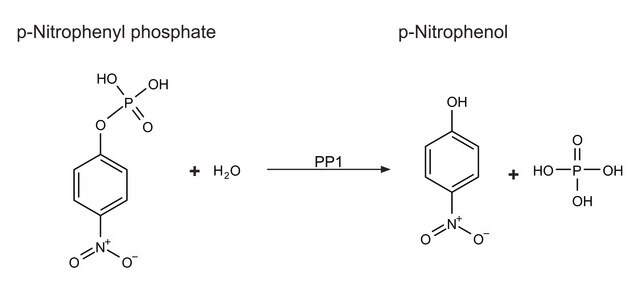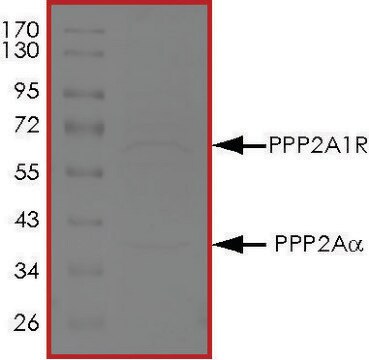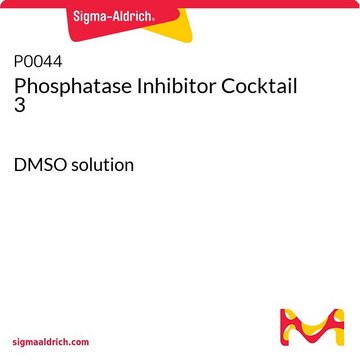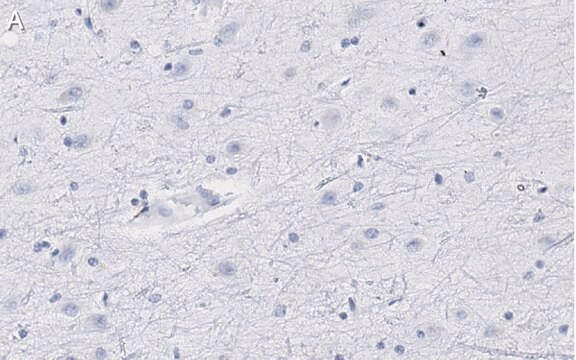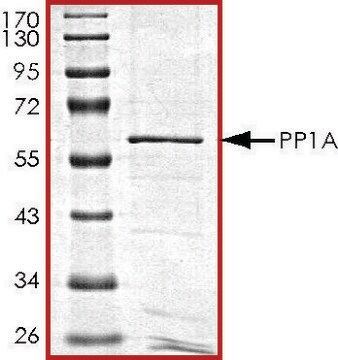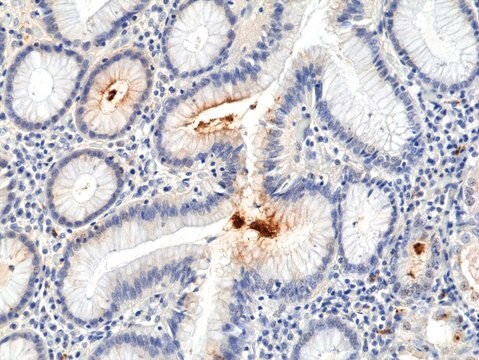14-595-M
PP1α Protein, 10 µg
Recombinant, full length, human PP1α, for use in Phosphatase Assays.
Synonym(s):
PPP1C, Phosphoprotein phosphatase 1, Phosphorylase phosphatase
About This Item
Recommended Products
biological source
human
Quality Level
recombinant
expressed in E. coli
form
solution
shelf life
6 mo.
mol wt
Mw 37.6 kDa
manufacturer/tradename
Upstate®
technique(s)
activity assay: suitable (phosphatase)
solubility
water: soluble
NCBI accession no.
UniProt accession no.
storage temp.
−20°C
Gene Information
human ... PPP1CA(5499)
General description
Protein Phosphatase 1 (PP1) is one of the key serine/threonine-specific protein phosphatases.
Application
Inflammation & Immunology
Biochem/physiol Actions
Protein Phosphatase 1 (PP1) has been associated with a wide range of biological processes, including synaptic plasticity, cell cycle progression, dopaminergic neurotransmission, contraction, and glycogen metabolism, maintaining microtubule stability and the dephosphorylation of tau. Furthermore, PP-1 plays a vital role in synaptic development, plasticity, signaling, neurite outgrowth, synapse formation, ion channel function, and neurotransmission. Changes in PP-1 signaling within dendritic spines have been linked to various neurological and psychiatric disorders.
Packaging
Quality
Physical form
Storage and Stability
Other Notes
Legal Information
Disclaimer
Signal Word
Warning
Hazard Statements
Precautionary Statements
Hazard Classifications
Skin Sens. 1
Storage Class Code
12 - Non Combustible Liquids
WGK
WGK 1
Regulatory Listings
Regulatory Listings are mainly provided for chemical products. Only limited information can be provided here for non-chemical products. No entry means none of the components are listed. It is the user’s obligation to ensure the safe and legal use of the product.
PDSCL
Deleterious substance
JAN Code
14-595M:
14-595:
Certificates of Analysis (COA)
Search for Certificates of Analysis (COA) by entering the products Lot/Batch Number. Lot and Batch Numbers can be found on a product’s label following the words ‘Lot’ or ‘Batch’.
Already Own This Product?
Find documentation for the products that you have recently purchased in the Document Library.
Our team of scientists has experience in all areas of research including Life Science, Material Science, Chemical Synthesis, Chromatography, Analytical and many others.
Contact Technical Service